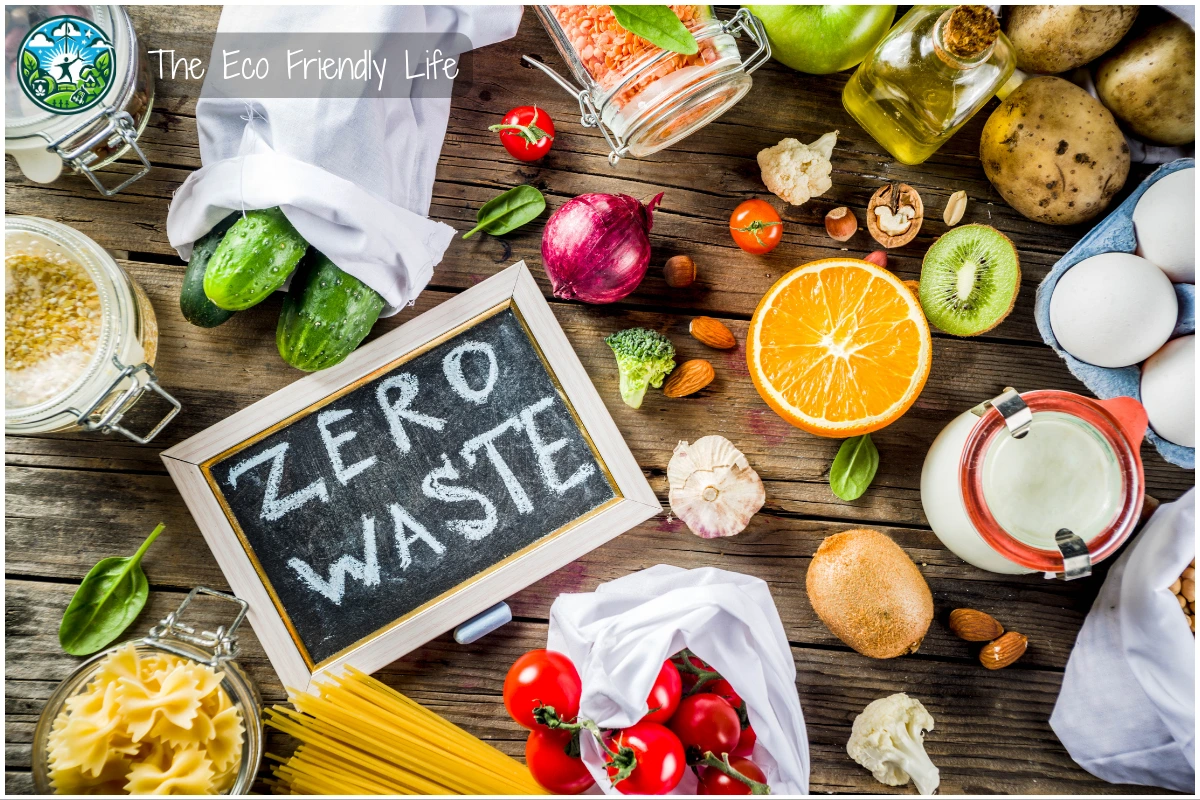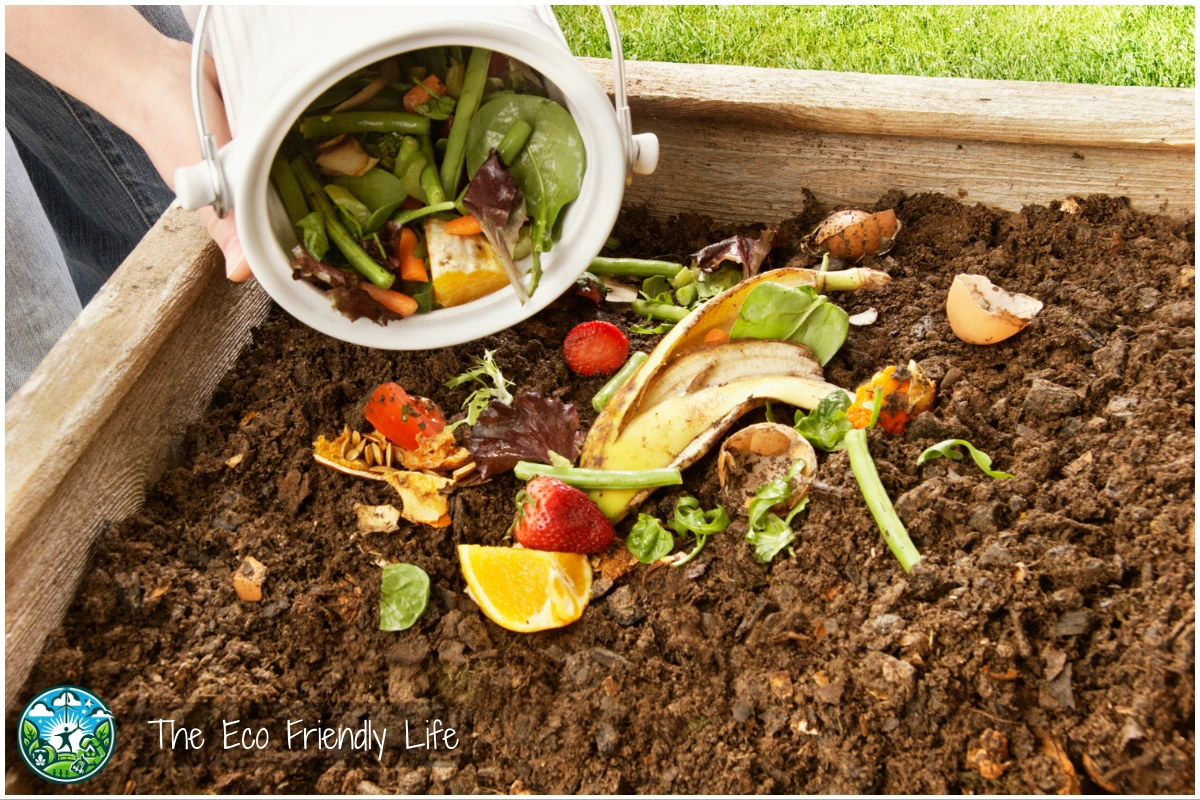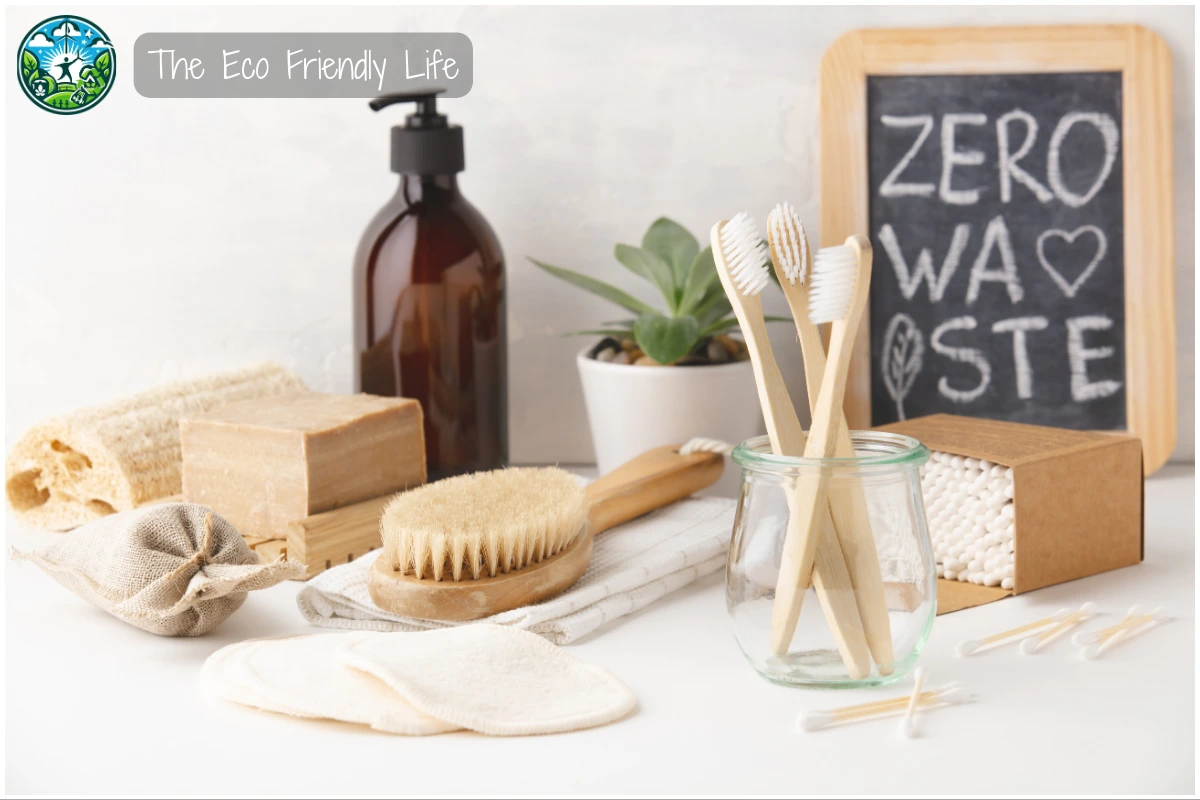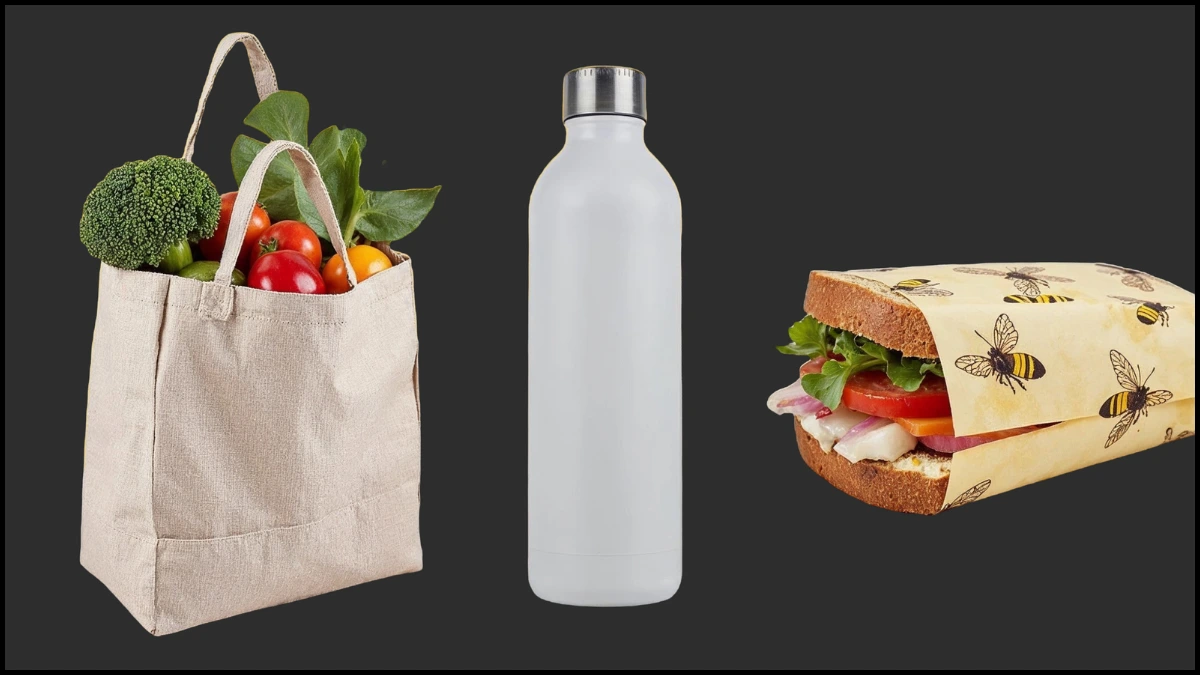Hi and welcome back. This is Katrina with you today, and I am very excited as it’s my first time writing for The Eco Friendly Life. In the last article Al took you through how people can help the environment and moving forward today we’re going to have a chat about some zero waste living tips, our first discussion within the broad concept of zero waste living, and how you can work towards minimizing waste and embracing a sustainable lifestyle. So let’s get started!

Introduction to Zero Waste Living
Let’s embark on the journey to zero waste: I’m going to take you on a guided tour of Zero Waste living. Now, this isn’t just about tossing less trash into the bin; it’s also about rethinking the way we approach our daily consumption. Zero Waste is a philosophy that encourages you to minimize trash output, and while getting to no waste at all is a tall order, it’s the journey toward it that matters.
Everyday decisions for a simpler, healthier world: You’re going to find out about how doing something as simple as making conscious consumption choices can make a significant impact on our environment. That’s right, your everyday decisions have the power to change the game for our planet. And the benefits? They’re not just personal—they’re global. By cutting down on waste, you’re effectively reducing the demand for unnecessary products, cutting out a load of toxins from your life, and simplifying things which doesn’t sound too bad either, does it?
Embrace the basics: If you want to commit to a more sustainable lifestyle, then understanding the basics of Zero Waste is key. It’s not just about waste—it’s a broader mindset that encompasses making better choices: refusing what we don’t need, reducing what we do, reusing what’s already there, recycling as a last resort, and returning what we can to the earth through composting.

Every little step matters: In my opinion, the measure of success isn’t in the perfection of the outcome but in the effectiveness of your intent and efforts. Don’t worry too much about achieving Zero Waste perfection. Choose something that is achievable for you, start small, and remember, every little bit counts in this quest to treat our planet with a bit more respect.
So, that’s the strategy I like to use when talking about Zero Waste living. Stay with me, because in the next section, I’m going to break down the core principles of Zero Waste. These guiding principles will serve as your lead as you navigate through the ins and outs of this sustainable living approach.
Embracing the Five Rs: Principles of Zero Waste
The five Rs – Refuse, reduce, reuse, recycle and rot: Zero Waste isn’t just about tossing less trash; it’s about rethinking the way we view consumption and our daily habits. To truly embrace Zero Waste, we need to ground ourselves in its five guiding principles, often termed the ‘Five Rs’: Refuse, Reduce, Reuse, Recycle, and Rot.
Say no to waste; Refusing what you don’t need is a powerful first step. It’s about saying ‘no’ to those unnecessary items that quickly turn into waste, like single-use plastics and promotional freebies. By turning them down, not only do you reduce your own clutter, but you’re also signaling to manufacturers that there’s less demand for these wasteful products.
Choose quality for the long-term: Next up, reduce what you do need. This isn’t about depriving yourself but choosing quality over quantity. Buying better-made items that last longer means you’ll be less likely to need replacements. It’s a smart choice for both your wallet and the environment.
Second-hand, repurpose and repair: Reusing should be at the forefront of your mind when purchasing anything. Can it have a second life? Think buying second-hand, repurposing old items, and repairing rather than discarding. Every item reused is one less in the landfill.
Take care to recycle properly: Recycling is vital for items we can’t refuse, reduce, or reuse. Proper recycling habits help reclaim valuable materials and ensure they don’t end up in natural habitats or contribute to pollution.

Rot to boost garden productivity: Lastly, rot, or composting, is about returning organic waste back to the earth. It transforms your food scraps and yard waste into valuable compost that nourishes the soil, reducing the need for chemical fertilizers and boosting your garden’s productivity.
Now, embracing the Five Rs seems like a tall order, doesn’t it? You might be wondering where to even begin. Don’t worry; the next section will provide you with practical steps to start your Zero Waste journey and integrate these principles into your day-to-day life smoothly.
Your Zero Waste Journey: Getting Started
If you’re itching to take the plunge into a more eco-friendly lifestyle, you’re going to find out about some practical steps to ease into Zero Waste living. Remember, this is not a sprint but a steady journey of incremental changes.
Simplify and streamline what you have already: The crux of getting started is simplifying your life. Begin by taking stock of what’s already in your space. Do you have items that you’ve barely used or that serve no real purpose? It’s time to streamline your possessions, ensuring that each item in your home serves a legitimate need or brings you joy.
Smart shopping with bulk food stores: Seek out your local bulk food stores. These gems allow you to fill your own reusable containers with everything from grains to spices. Doing this drastically cuts down on packaging waste and often, it’s a real money-saver too.
Say no to disposables: Refuse to play along with the culture of disposables. This means turning down freebies and promotional items that clutter your life and our planet. It’s about making a habit of saying ‘no thank you’ to the non-essential – from plastic cutlery to those tiny promotional packs of home products.
Transition to sustainable with care: Consider the everyday products you can’t imagine living without. Whether it’s your favorite snack or your go-to cleaning supplies, there’s usually a package-free alternative or a way to make it yourself. However, don’t toss out what you already have; use up your current products before making the switch to more sustainable options.
Making these changes may feel daunting at first, but don’t worry too much about perfection. Choose something that resonates with you and fits comfortably into your life before branching out. You can always adjust your approach down the road.
The Zero Waste Home: Room-by-Room Guide
Navigating the transition to Zero Waste can be much simpler when tackled room by room. Let’s cut through the clutter and target the changes you can make in each space of your home, which can have a positive impact on the environment and, quite possibly, on your wallet too.
Transform to a sustainable kitchen: In the kitchen, the heart of any home, the potential for waste reduction is enormous. Opt for compostable or reusable alternatives to single-use items like cling wrap and paper towels, and rethink your need for appliances that are seldom used. If you’re looking to reduce your greenhouse gas emissions, consider decreasing your meat consumption, or at least choose sustainably sourced options. Plus, your choice in cleaning products can be overhauled to favor natural, homemade solutions, while airtight containers can help keep food fresher for longer, thereby cutting down on food waste.
What about the bathroom: Moving into the bathroom, swap out disposable razors, cotton swabs, and plastic toothbrushes for their long-lasting, eco-friendly counterparts. Compounding this are options for bulk or packaging-free toothpaste and shampoo bars, which can greatly cut down your plastic waste. Women might consider reusable menstrual products—a smart move both environmentally and economically. And don’t overlook makeup and deodorant; Zero Waste alternatives are gaining in popularity, combining sustainability with performance.

A chemical free laundry: Your laundry room makeover involves saying goodbye to chemical-laden detergents in favor of bulk or all-natural options. Fabric softeners and stain removers can be switched out for eco-friendlier choices, and consider adding wool dryer balls to your routine as a reusable alternative to dryer sheets.
Go natural, mend and get creative with your clothes: In your bedroom, wardrobe management is key. Choose natural materials for bedding, and aim to curate a capsule wardrobe to reduce fashion waste. Learn simple mending techniques to extend the life of your clothes or swap clothes with friends as a fun way to refresh your style without new purchases.
Now, to round off this section let’s look at a comparison table of single-use and sustainable home products, just to get your thoughts fired up:
| Single-Use Item | Sustainable Alternative |
|---|---|
| Plastic grocery bags | Reusable grocery bags |
| Paper towels | Compostable cloths (e.g., Skoy cloths) |
| Plastic water bottles | Reusable water bottles (e.g., stainless steel, glass) |
| Disposable coffee cups | Reusable coffee/tea cups |
| Plastic sandwich bags | Beeswax wraps or stainless steel lunch boxes |
| Plastic straws | Reusable straws (e.g., stainless steel, glass, bamboo) |
| Plastic wrap | Beeswax wraps |
| Disposable cutlery | Reusable cutlery sets (e.g., bamboo, stainless steel) |
| Disposable coffee filters | Filter-free coffee makers (e.g., French press) or reusable coffee filters |
| Plastic toothbrushes | Bamboo or wooden toothbrushes |
Extending Zero Waste Principles Beyond Your Front Door
So, you’ve embraced Zero Waste principles inside your home. But what about when you step outside? Keeping your Zero Waste goals in check while out and about is crucial to the integrity of your initiative. Here’s how you can practice Zero Waste living beyond the confines of your own space.
Eco-friendly dining away from home: Eating out doesn’t have to mean waste. Choose eateries that support your values and carry your own containers and utensils. Don’t be shy to refuse disposable items and suggest improvements when opportunities arise.
Lets encourage sustainable passionate kids: When it comes to kids, focus on quality and longevity. Whether it’s toys, clothes, or school items, choosing reusable options and prioritizing experiences over material goods can instill valuable lessons early on.
Waste-free recreation time: Recreational activities and entertainment can be enjoyed waste-free, too. Opt for adventures in nature, and bring along your essentials—like water bottles and containers—when visiting places that tend to offer single-use options.
Jump aboard the zero-waste movement: As the Zero Waste movement picks up momentum globally, it’s exciting to see how businesses and communities are adapting. The challenge now is to discover how you can come as close as possible to a Zero Waste lifestyle through thoughtful consumption and waste reduction.
Joining the Zero Waste challenge is not just about personal gain; it’s about contributing to a larger, community-wide paradigm shift. Incorporate these tips into your daily routines and witness how small, mindful decisions can culminate in substantial environmental impact.
Conclusion
To wrap things up today let’s summarise ten key steps to zero waste living that you can put into action immediately.
- Refuse what you don’t need: Decline unnecessary items such as promotional products, junk mail, and plastic straws.
- Reduce what you do use: Minimize waste by using less and choosing products with minimal packaging.
- Reuse whatever you can: Opt for reusable items such as shopping bags, water bottles, coffee cups, and food containers.
- Recycle what you can’t refuse or reduce: Properly recycle materials like paper, glass, and certain plastics to keep them out of landfills.
- Compost food scraps and biodegradable items: Create a compost system to recycle organic waste into nutrient-rich soil.
- Shop in bulk: Buy food and other goods in bulk using your own containers to reduce packaging waste.
- Make your own cleaning and personal care products: Use simple, natural ingredients to create homemade alternatives.
- Carry your own containers for takeout: Bring reusable containers and utensils for meals on the go to avoid disposable items.
- Choose sustainable clothing: Buy high-quality, second-hand, or sustainably produced clothing to reduce textile waste.
- Repair and mend items: Fix broken items and clothing instead of discarding them to extend their lifespan and reduce waste.
I hope you take what you’ve read today and find a way to take action. Remember the journey to Zero Waste isn’t solely about waste reduction; it’s also about fostering sustainable practices that create momentum throughout your community towards a better future.



When I saw the title of this post, I thought ‘hmmm’, that looks interesting. And I was right. Your post provides little mindset shifts that can have a profound impact on the health and sustainability of our environments.
I like the 5 Rs and the way they are each explained simply, making them easy to comprehend. I thought that the transitioning tips are also very useful and I particularly liked the room by room guide. I felt like it could help me to start my zero waste journey immediately right within my immediate environment and controllable space before extending the principles beyond my front door.
This post is very practical and could change, for good, the world as we know it today if we can each make the little contributions recommended here. Thank you for this impactful post.
Hi Oluseyi,
Thank you so much for your thoughtful and encouraging comment! I’m thrilled to hear that you found the post interesting and practical. The 5 Rs are indeed a great framework for anyone starting their zero waste journey, and I’m glad you found the explanations clear and helpful.
The room-by-room guide is designed to make the transition manageable and less overwhelming, so it’s wonderful to know that you feel it can help you begin your journey right away within your own space. Starting within our immediate environment and then extending these principles outward is a fantastic approach.
Your kind words reinforce the importance of these small, consistent changes and their collective impact on our world. Thank you for taking the time to share your thoughts and for being a part of the movement toward a more sustainable future.
Hey there,
I must say, this beginner’s guide to zero-waste living is an absolute gem! It’s refreshing to see a comprehensive resource that offers practical tips and insights for embracing a more sustainable lifestyle. From reducing single-use plastics to composting and mindful shopping, this guide covers it all, making it easier for anyone to embark on their zero-waste journey. The inclusion of real-life examples and success stories adds an inspiring touch, motivating readers to take meaningful steps towards reducing their environmental footprint. Thank you for providing such a valuable resource for those looking to make a positive impact on the planet. This guide is a must-read for anyone interested in embracing a more eco-friendly and sustainable way of life. Well done!
Marios
Hey Marios,
Thank you so much for your kind words! I’m thrilled to hear that you found the beginner’s guide to zero-waste living both comprehensive and inspiring. It’s wonderful to know that the practical tips, real-life examples, and success stories struck a chord with you and provided motivation for your own journey towards sustainability.If you have any questions or need further advice as you continue on your zero-waste journey, please feel free to reach out. Together, we can make a significant impact on our planet.
Thank you again for your support and encouragement!